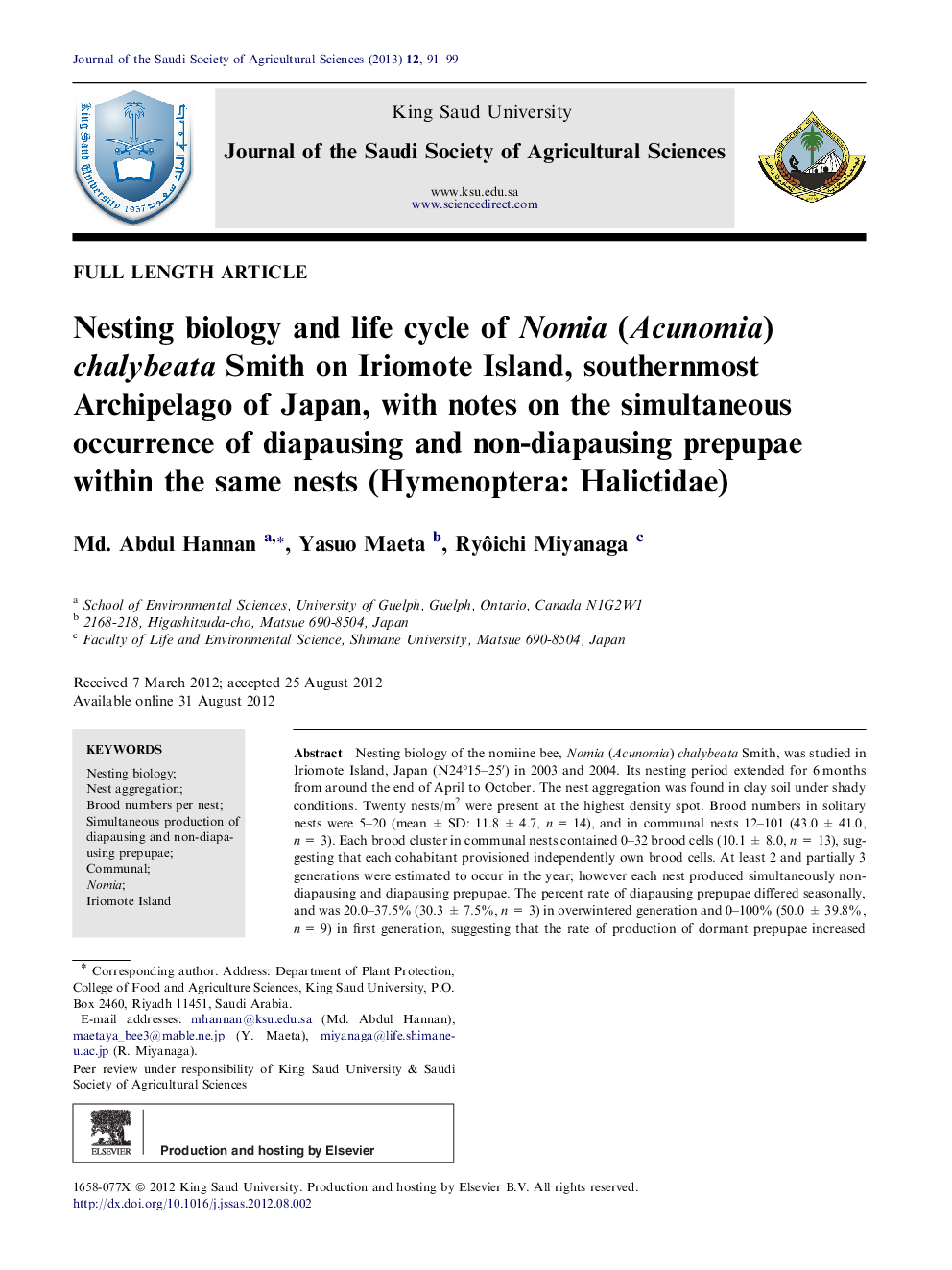| Article ID | Journal | Published Year | Pages | File Type |
|---|---|---|---|---|
| 4495716 | Journal of the Saudi Society of Agricultural Sciences | 2013 | 9 Pages |
Nesting biology of the nomiine bee, Nomia (Acunomia) chalybeata Smith, was studied in Iriomote Island, Japan (N24°15–25′) in 2003 and 2004. Its nesting period extended for 6 months from around the end of April to October. The nest aggregation was found in clay soil under shady conditions. Twenty nests/m2 were present at the highest density spot. Brood numbers in solitary nests were 5–20 (mean ± SD: 11.8 ± 4.7, n = 14), and in communal nests 12–101 (43.0 ± 41.0, n = 3). Each brood cluster in communal nests contained 0–32 brood cells (10.1 ± 8.0, n = 13), suggesting that each cohabitant provisioned independently own brood cells. At least 2 and partially 3 generations were estimated to occur in the year; however each nest produced simultaneously non-diapausing and diapausing prepupae. The percent rate of diapausing prepupae differed seasonally, and was 20.0–37.5% (30.3 ± 7.5%, n = 3) in overwintered generation and 0–100% (50.0 ± 39.8%, n = 9) in first generation, suggesting that the rate of production of dormant prepupae increased toward the later activity season. Production of the diapausing prepupae may function potentially to inhabit widely throughout different climatic zones. Female ratio (females/females + males) in overwintered generation was 0.347 (50/144). Nest architecture, occurrence of communal nests and breaking of prepupal diapause are also mentioned.
